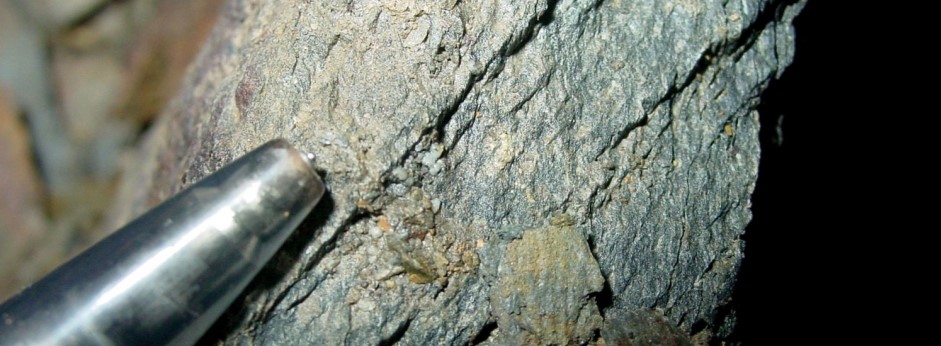An Example From A ‘Carlin-Like’ Gold Deposit, Jianchaling Mine, China
In October 2004, Sino Gold commissioned SRK to undertake a structural geology study of the Jianchaling Gold Mine in Central China. This study was intended to improve the understanding of the structural controls and continuity on the Carlin-like gold mineralisation within the operating mine, as well as to develop targets for the near mine exploration program.
Previous geology studies classified the deposit as a hybrid between an epizonal Lisvenite deposit and a Carlin-like gold deposit, as the petrographic and geological associations exhibited characteristics of each style. Gold mineralisation was primarily located within fractures and veins of a host ultramafic unit at the contact of the F145 fault, which separated the hanging wall dolomites. Early studies were comprehensive on the geology and petrology of the deposit, but they did not adequately define the structural controls of mineralisation or ways to optimise future mining or exploration. Once mining moved to deeper levels of the deposit, it was quickly discovered that gold mineralisation was not continuous along the fault from the upper to lower levels, resulting in a significant write-down of mining reserves.
SRK undertook a mapping study of the drill core, focused on the structure of the underground and surface exposures. A new deformation framework was established that was integrated with the paragenesis of metamorphism, alteration and mineralisation. The study indicated that the bulk of the gold mineralisation at the deposit lays on a shallow north dipping portion of the steeply dipping F145 fault. Up to 80 metres of horizontal rotational displacement of the fault pre-dated mineralisation and this displacement was crucial in providing the necessary heterogeneity for brecciation and dilation along the fault during mineralisation.
The Jianchaling deposit is an excellent example where deformation that pre-dated mineralisation was critical in developing heterogeneities within a host fault/structure that subsequently localised mineralisation. By mapping the cleavage-bedding relationships, foliation asymmetry, shear zone and fault kinematics in the units in the hanging wall and footwall to the deposit, we arrived at a clearer picture of the deformation framework, as well as identifying a mechanism for gold mineralisation within the F145 fault. The shallow dipping portions of the fault were the result of early recumbent folding that provided favorable traps where mineralising fluids could accumulate during a later transpressional deformation along the orogen.
This study highlighted the need for quality geology studies that identify structures that control mineralisation and/or affect the continuity at early stages of feasibility studies. Once this information is incorporated into the geological and resource model, it can be continually improved and updated during future development in order to optimise production and exploration.
The results of this work were presented at the 2005 SGA conference hosted in Beijing.

